Sand vs Cartridge Pool Filters: What’s the Difference?
-
- Last updated:
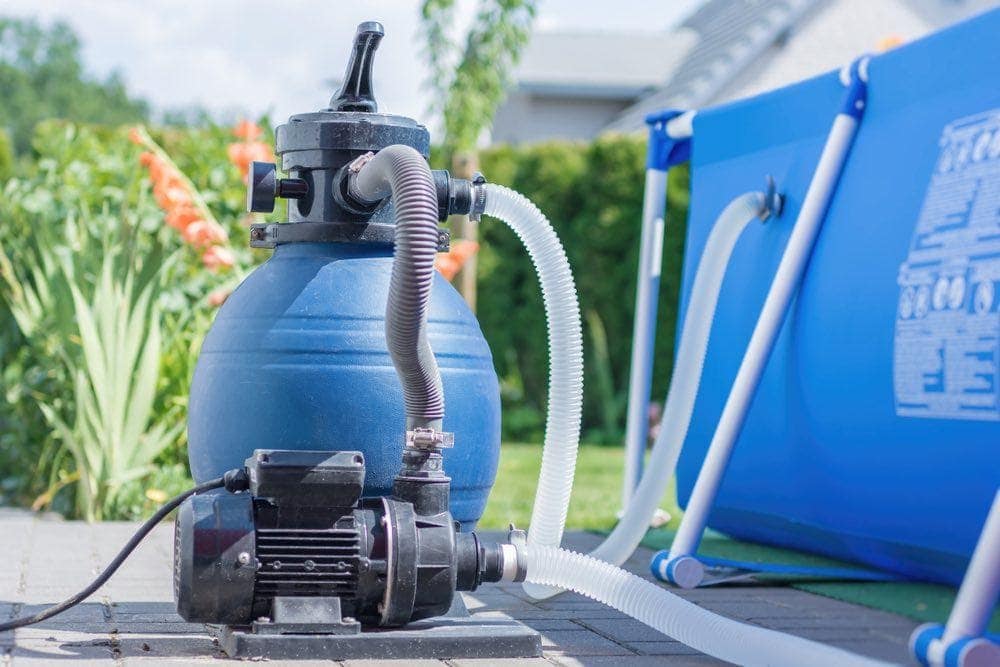

Which pool filter is better for your pool? Sand or Cartridge? It’s a good question with some serious financial implications, but before we can answer it completely we need to define a few terms.

Microns
Pool filters are rated by the size of the particles and debris they can catch. The smaller the particles, the better the filter. Pool filters use microns as their measurement. So what the heck is a micron?
A micron, also called a micrometer is a measurement in the Metric System. It equals one-millionth of a meter. Meters remember, are just a little bit shorter than a yard. That’s nice but it’s hard to visualize, so let’s make it a little more practical.
A human hair is 50 microns in diameter. Take one of the hairs out of your brush or comb and examine it. A cross-section of it is 50 microns. So, when we talk about the size of debris a pool filter can catch, remember that and use it for comparison.
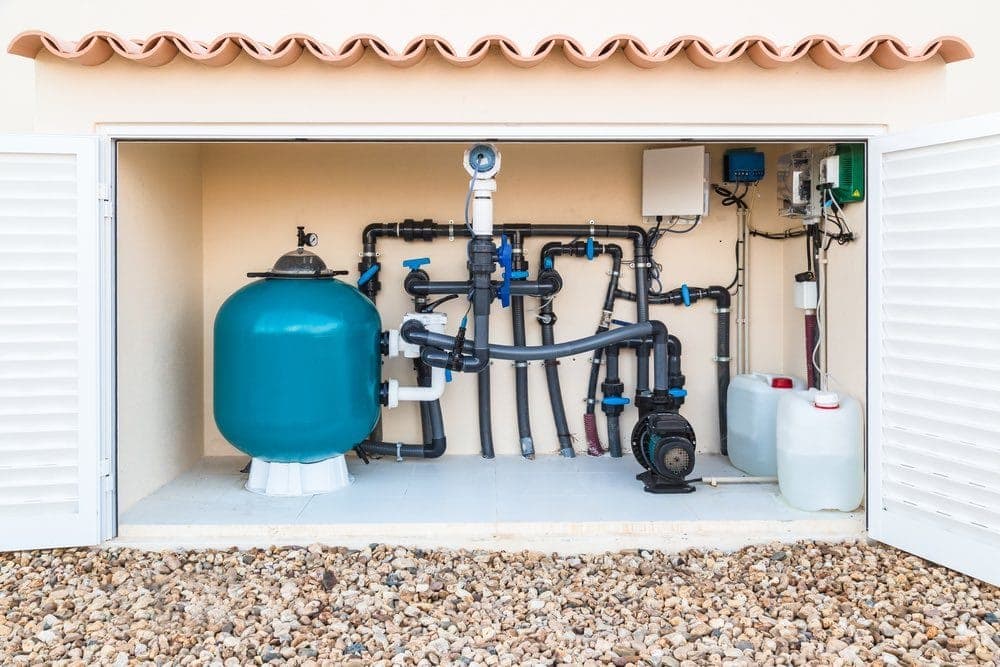
Surface Area
Pool filters are also rated by their surface area, that is, how much surface is available for water to flow over or through to catch debris. The more surface area is available, the better the filter will work. Makes sense, right?
Because of differences in the way they’re constructed, sand and cartridge filters have very different numbers for their surface area. Most sand filters will have between 3 to 7 square feet of surface area, while cartridge filters will average between 200 to 500 square feet.
Sand

If you look at the silica sand used for pool filters under a microscope, each grain will look like a tiny boulder with sharp, jagged edges. Sand is very porous, and the sharp edges on the grains of sand catch particles and debris as water carries them through the filter. Sand filters will normally catch debris in the 20-40 micron range.
As time goes on, the edges on each grain of sand will gradually wear down until they resemble smooth river rocks. At that point, they won’t catch much debris and it’s time to replace the sand. This happens about every 5-8 years. Sand is cheap but it’s also heavy. This means changing it is a lot of work. Allow yourself a couple of hours to do it right.
Cartridges
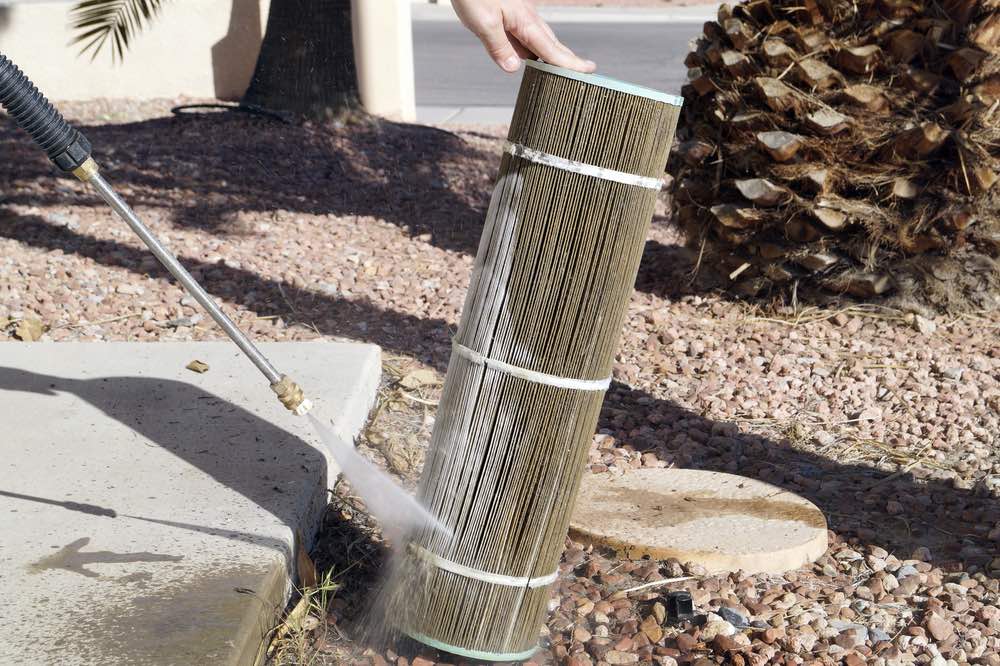
Cartridges have a porous membrane that water can flow through. The fabric is what catches particles and debris. These catch much smaller particles than sand filters do in the 10-15 micron range.
The membranes in cartridge filters wear out much faster than sand does, so they have to be replaced every 1-3 years. They’re much more expensive than sand so the cost will be more. They’re very lightweight though, so changing them is a breeze.

Sand Filters: Pros & Cons
Sand filters were the first type of filter invented for swimming pools. A filter usually consists of a round or oblong tank on a stand. A multiport valve is on top. The tank has to be filled with several hundred pounds of filter sand, i.e., silica sand. How much will depend on the size of the filter.
Different size swimming pools will need different sizes of filters. For instance, a 10,000-gallon swimming pool will need a sand filter that is rated at 3.0 square feet, while a 40,000-gallon pool will need a sand filter that is rated at 6.9 square feet.
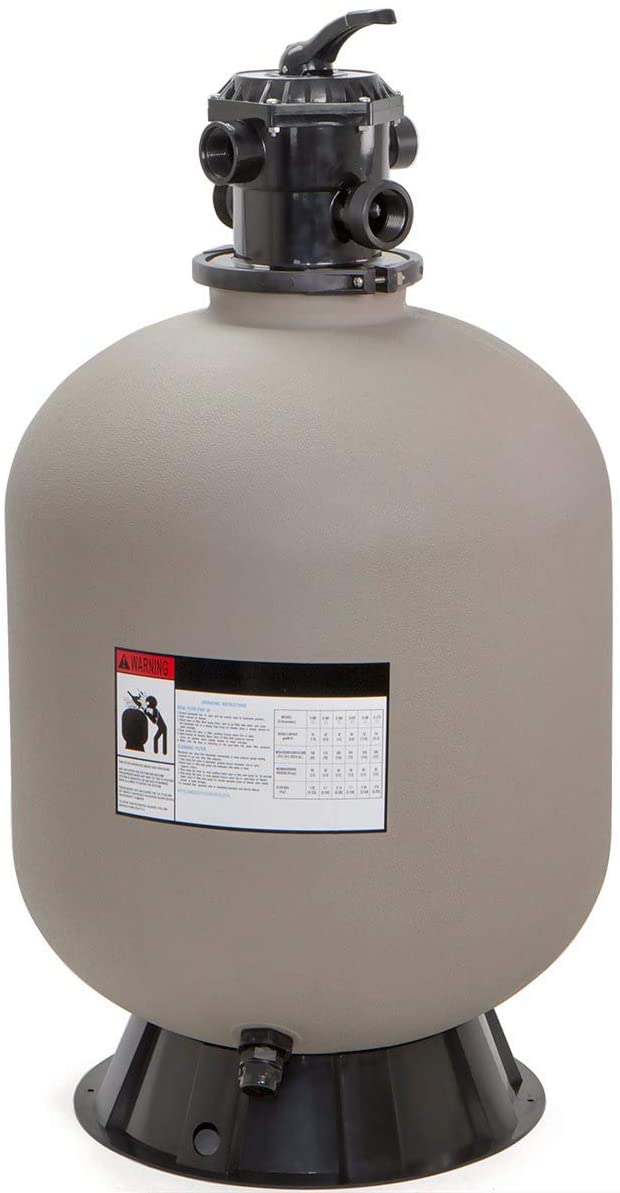
Water from the pool is pushed through the filter, which cleans it. Then the water is pumped back into the pool. As debris and foreign particles accumulate in the filter, the pressure required to push water through the filter will gradually increase. Once it reaches twice its normal operating range, it’s time to clean the filter.
This is accomplished by turning the setting on the multiport valve to “waste”. The water will flow in the opposite direction it normally does, washing the debris out of the filter and squirting it out a valve on the filter. This water either goes into your yard or a drain pipe. This process is called backwashing, and it lowers the water level in the pool.
Once you’ve finished backwashing you’ll have to add new water to the pool and balance the chemicals in the water.
Overall, sand filters are cheap, easy to use, and maintain. They’re dependable and long-lasting.

Cartridge Filters: Pros & Cons
These filters look a lot like the air filter in your car only taller, so they’re tube-shaped. They fit down inside a 2-piece tank that has a removable top. These are usually tall and slender compared to a sand filter.
Like a sand filter, different size pools will need different size filters. A 10,000-gallon pool will need a cartridge filter that is rated at 100-200 square feet, while a 40,000-gallon pool will need a cartridge filter that is rated at 500+ square feet.
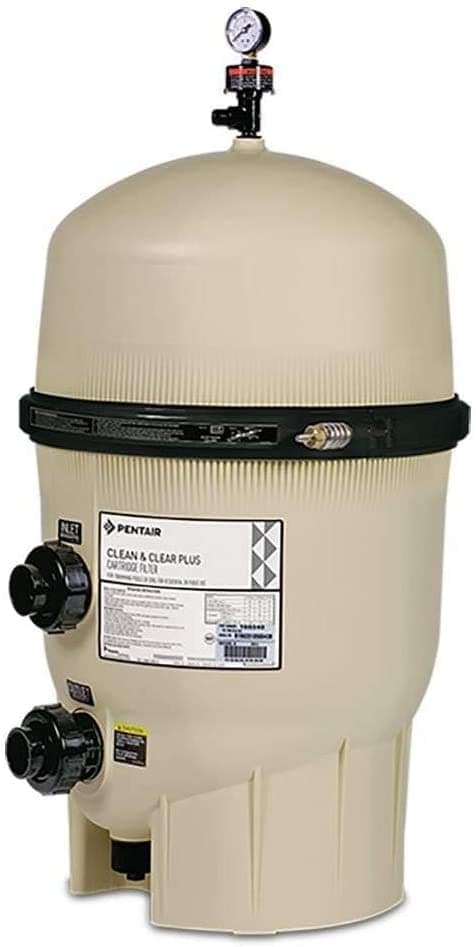
Because cartridge filters have such a large surface area for catching debris, they don’t need nearly as much pressure as sand filters do. Lower pressure means less work for your pump, which translates into less wear and tear on it, thus extending its workable life.
Cleaning a cartridge filter is easy. When the water pressure at the pump reaches 10 PSI, it’s time to clean it. Take the top off the tank and remove the filter. Then wash it off with the garden hose. Put the filter back in the tank and secure the top.
Overall, cartridge filters have a higher initial cost than sand filters and the cartridges themselves are more expensive than sand. This is balanced by the ease of cleaning them and the fact you don’t lose water by backwashing, then having to add more water.

Conclusion
If cost is an issue, pick the sand filter. They’ve been around a long time and are a popular option. If ease of use and maintenance are your priorities, then the cartridge filter is the choice for you.
Either one will give you years of enjoyment and clean water in your swimming pool.
Featured Image Credit: Ralf Geithe, Shutterstock
Contents

